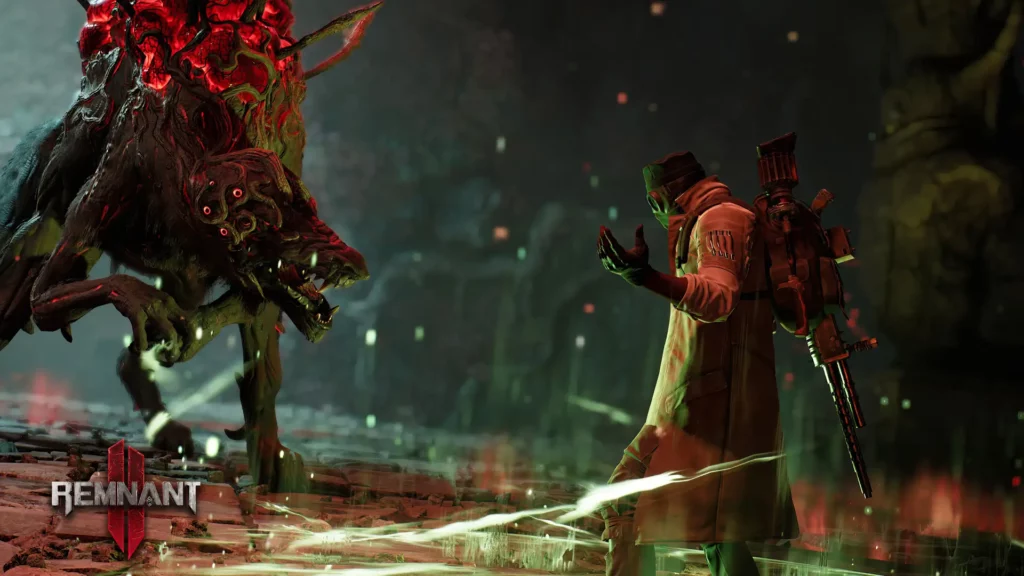Souls-Like has become a well-recognized genre, which was difficult to envisage some three to four years back. Even still, Sony launched the PS5 with a remake of Demons Souls in 2020, immediately after Sekiro won several awards in 2019. This was around the time when developers and studios realized the potential that this niche of action RPG had. Soon, a lot of Souls-like characteristics by From Software, like enemies re-spawning on resting at checkpoints, complex level designs with shortcuts to unlock, eclectic lore, and, of course, tough-as-nails combat mechanics, became a staple in games like The Surge, Code Vein, Mortal Shell, Thymesia, Ashen, almost all Team Ninja games.
Another game that took these mechanics and applied them to gun combat surprisingly well (Dark Souls with guns was the elevator pitch) was Remnant: From The Ashes, which was released back in August of 2019 by Gunfire Games for PC, PS4, and Xbox One. While it could be played solo, it was a multi-player experience with interesting world-building.
The graphics were not the best, and overwhelming players by throwing enemies in spades was something that the gaming community pointed out as misses. Still, it was received reasonably well and ended up with a Metacritic score of 78 but a User score of 6.8. It was considered promising but kind of fell under the radar for a lot of gamers
Five years later, Gunfire Games came up with the sequel and a year and couple of DLCs later, and we make the case for it being one of the best Souls-likes around.
Build Variety

Looking to take down enemies one by one from a distance with a long gun? Sure. Pick up the Hunter class, mark enemies to get easy critical damage, and get bonus damage to all marked enemies, since- why not? Or, take up the Challenger class to be a melee, tank equivalent, and destroy enemies with a close-range shotgun or an Iron Greatsword (yes! Melee weapons work great here). You can then pick up a second class with their perks and benefits.
A particular class combination can have you summon thorny spiked companions and a heavy gun turret together to help you out in combat. Another can give you infinite ammo + high critical damage on your guns. When you then add the fact that each weapon has its own mod (special power), which a mutator can further customize, and that you can equip rings and amulets to further tweak stamina regen or increase your weapon damage type… It’s one of those cases where you are already planning your build for the second run when playing for the first time
World Building
Remnant 2 squarely follows the Souls-like principle (sharpened and shaped to perfection in Elden Ring) of prioritizing exploration over a check-box /things to do (looking at you, Rise Of The Ronin) approach to the open world. The delight of running into an obscure puzzle and the satisfaction of having solved it for the game to open up one of its treasures—be it a weapon, a ring, or an amulet is something that Remnant 2 gets spot on. This is so much so that one of its archetypes (classes) required data-mining for gamers to discover.
The lore is also fascinating, and the world-building of a universe under ruins thanks to an evil entity called ‘ The Root’ which has taken over and led several worlds to their destruction. It’s also a great way to have the protagonist travel to diverse worlds – from what resembles a Bloodbornesque Yharnam to a futuristic space world dominated by robots. It is consistently engaging and makes me want to explore more to discover the next fascinating secret and try to crack it open.
Combat

Of course, we cannot have a Souls-like comparison without a key condition being met: tight, engaging combat that feels responsive and challenging. This is an area where Remnant 2 shines positively. Each weapon type feels appropriately different, from the high stagger of a shotgun to the sharpness of a rifle to the rapid-fire rate of an SMG. Surprisingly, the melee weapons also have decent variety and are viable (except against some bosses).
Stamina management is the key here (again, like in all good Souls-likes). Whether you want to wield a heavy armor to tank hits and dish out major shotgun damage in close combat, or you want to be light, agile, and dodge out of the way while dishing out rapid shots from your rifle—the choice is yours. In both, the fights are frantic and satisfying.
Replayability

I touched upon a point briefly before, but let me explain it better here. The developers leveraged the neat premise of the game mentioned earlier along with ‘procedurally generated’ worlds (each adventure could begin in any of the three worlds and at a randomly selected starting point). This meant that your run could be drastically different. Thanks to that world spawning the last for you, the weapon you obtained by the end of the game could be yours early into the game if that world spawned first for you in your next run! Similarly, all rings, amulets, and archetypes you equip yourself with would drastically differ every time you roll a new campaign. This, along with the build possibilities, means that you could put in many hours into the game without a sense of monotony or repetition and work towards your ‘perfect’ build.
All of the above make Remnant 2 one of the best soul-likes around, even in the face of stiff opposition from games like Lies Of P, Lords Of The Fallen, and several others. You can check out our comprehensive guides hub for Remnant 2 for more.






